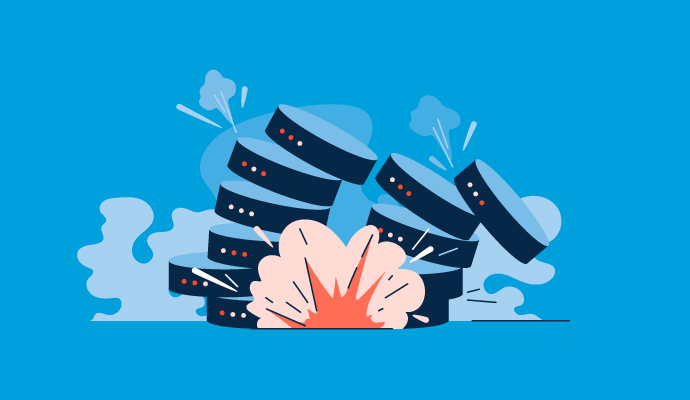The Significance of Effective Data Devastation Practices in Safeguarding Sensitive Info and Ensuring Computer System Safety
In an era where information breaches are significantly common, the relevance of effective information damage practices can not be overstated. Organizations face significant dangers when sensitive info is improperly dealt with, potentially causing unapproved gain access to and extreme economic effects. Applying durable information devastation approaches not just minimizes these threats but also aligns with legal compliance needs, making certain that companies copyright their credibility and foster customer trust fund. However, the question stays: what specific techniques can be employed to enhance these practices, and exactly how can organizations efficiently incorporate them right into their total cybersecurity framework?
Understanding Information Destruction
Recognizing data devastation is vital in today's digital landscape, where delicate information can quickly be compromised. Efficient data devastation includes not simply guaranteeing yet erasing files that information is irretrievable with extensive techniques. This process is crucial for organizations that take care of confidential customer details, copyright, or interior documents, as any type of violation can bring about severe economic and reputational consequences.
Information devastation encompasses different strategies, consisting of shredding physical media, degaussing magnetic storage tools, and using software-based solutions that overwrite data several times. Each approach serves a details purpose and should line up with the level of sensitivity of the information being gotten rid of. Physical damage is often favored for hard drives including very private data, while software application methods might be sufficient for less sensitive info.
Moreover, adhering to industry standards and laws, such as the General Data Protection Regulation (GDPR) or the Wellness Insurance Coverage Transportability and Accountability Act (HIPAA), is imperative for compliance and to minimize legal dangers. Organizations must develop a robust information damage plan, train employees on best practices, and frequently investigate their treatments to make sure that all delicate info is gotten rid of safely and efficiently.
Dangers of Inadequate Practices
Insufficient data damage practices subject companies to considerable risks that can have significant consequences. When sensitive details is not appropriately dealt with, it continues to be prone to unapproved access, which can bring about data violations and identity burglary. Such events not just jeopardize the security of people but additionally tarnish the company's credibility, causing a loss of client count on and possible financial repercussions.
In addition, regulative compliance is increasingly stringent in lots of sectors. Failing to abide by data devastation laws can lead to large penalties and lawful activities against organizations. These penalties can stress funds and draw away interest from core organization operations.
On top of that, the abuse of residual data can cause copyright theft or business reconnaissance, threatening competitive benefits (data destruction). The effect of inadequate information damage extends beyond instant economic losses; it can also cause long-lasting damage to brand integrity and market placement

Organizations have to acknowledge that information safety is not entirely concerning avoiding violations; it additionally encompasses the accountable monitoring of data throughout its lifecycle. Overlooking effective data damage methods can have devastating implications, underscoring the requirement for durable steps to alleviate these risks.
Best Practices for Information Devastation
Applying reliable information devastation techniques is important for securing delicate details and maintaining compliance with governing criteria. Organizations must take on a multi-faceted approach to ensure that information is irretrievable, therefore protecting against unapproved access and possible breaches.
First, information need to be classified based on sensitivity, enabling organizations to apply proper devastation approaches tailored to the level of danger. For electronic data, utilizing software-based data-wiping tools that abide by industry criteria can properly overwrite existing information. Physical devastation approaches, such as shredding or degaussing, are vital for gadgets that save delicate details, ensuring total elimination.
Establishing a clear data retention plan is essential, outlining the length of time various types of information ought to be maintained before damage. Regular audits of data storage systems are also essential to identify out-of-date or unneeded information needing elimination.
Furthermore, training workers on the significance of information destruction and the details protocols to adhere to fosters a society of safety within the organization. Ultimately, preserving documentation of information devastation processes provides liability and supports compliance with outside laws and internal policies. By sticking to these finest methods, companies can substantially alleviate the threats linked with data direct exposure.
Legal and Compliance Considerations

Failing to abide by these guidelines can lead to severe penalties, consisting of considerable fines and reputational damages. Organizations must implement a durable information damage plan that straightens with these lawful structures and provides clear standards on the proper approaches of data disposal, whether physical shredding or electronic wiping.
Moreover, preserving documents of information damage tasks is important for showing conformity during audits or inspections. By focusing on lawful and conformity factors to consider, companies can enhance their information protection posture and foster depend on with customers and stakeholders, ultimately adding to a more protected data management environment.
Advantages of Effective Information Damage
Reliable data damage practices prolong beyond simple compliance; they offer considerable advantages to organizations that prioritize them. By making certain that sensitive information is irretrievably damaged, companies minimize the danger of information violations and the prospective monetary effects connected with them. This positive strategy not just safeguards against unapproved access yet additionally improves the general dependability of the organization in the eyes of stakeholders and clients.
Implementing robust information damage techniques, such as physical damage of storage space tools or innovative data wiping strategies, adds to the fortifying of a company's cybersecurity pose. data destruction. It reduces the chance of copyright theft and shields proprietary information, thus keeping an one-upmanship out there

Conclusion
Finally, efficient information destruction techniques are vital for guarding sensitive details and improving overall computer safety and security. By implementing extensive approaches such as software program, shredding, and degaussing overwriting, organizations can minimize the threats related to unauthorized accessibility and data violations. Adherence to regulatory standards, including GDPR and HIPAA, more reinforces conformity and shields against lawful effects. Eventually, a commitment to durable data destruction strategies cultivates a society of responsibility, consequently enhancing an organization's cybersecurity position and maintaining customer count on.
